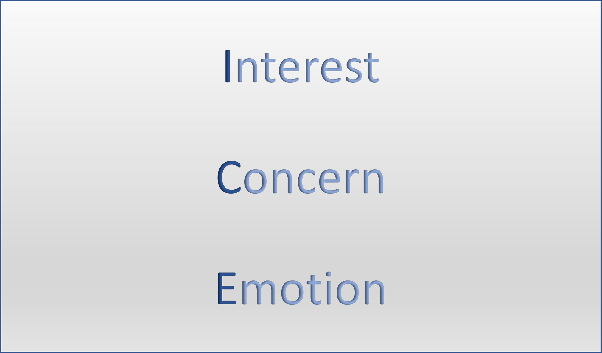Convince with Style
How personal style helps win over skeptics
Convince with Style
Convince with Style
You know the problem. You have an idea you want to implement and now you "just" need to convince your colleagues. Unfortunately, you know there's a passionate critic among them and another who will reject your proposal simply because it's from you. Even though the facts are on your side, it's likely these two will badmouth your plan and reduce its acceptance among the other colleagues to zero.
So how can you win these two over to your idea? Here's a small tip: It's not about facts or your arguments.
Show Your Likeable Side
More important than a well-thought-out presentation or logical argumentation is your attitude towards those you're trying to convince.
Be aware of your presence. You know you'll face resistance, so don't let it show. If you go into the conversation with doubts, this emotion will reflect in your posture. You'll appear nervous or even tense.
Stand up straight, keep your back straight, and pull your shoulders slightly back. Show your passion and enthusiasm for your idea to infect others with your excitement.
You can't appear open-hearted if you stand stiffly with your hands in your pockets or arms crossed. To achieve maximum authenticity, your gestures and facial expressions must match your words.
Stand relaxed, smile, and use your hands to visually support your words without flailing wildly.
As an additional tip, people tend to trust someone they respect or even admire. You can achieve a lot with just your personal style.
 |
 |
|---|---|
 |
 |
Stay Objective
You've now presented your idea and backed it up with a maximum of three arguments. If you present more than three arguments, it raises skepticism among your listeners, as Suzanne Shu from the Anderson School of Business and Kurt Carlson from Georgetown University found in their study "When Three Charms But Four Alarms." During your explanations, you've already seen in the expressions how the critics are forming potential points of criticism.
But no matter how personal the criticism may be: Stay objective! If you react emotionally now, you'll quickly adopt an aggressive posture and can forget about being credible and convincing.
Instead, openly question whether certain aspects of your proposal might need improvement. Ask the critic to specify their concerns and suggest solutions for the problems they raise.
Find Common Ground
If your proposal is rejected with a convincing argument, don't just look for counterarguments. Otherwise, you might find yourself in an argument spiral with your colleagues. Everyone tries to counter each argument with their own, and no one is satisfied.
Instead, try to build on a common interest. Let's assume we're proposing a new filing cabinet structure to our colleagues. With the current chaotic sorting, it takes a long time to find a specific file. So, saving time searching for the needed file is a common interest. Who likes searching for a file forever?
Focus on this goal together, and you won't split into extreme pro and con positions. Instead, you'll discuss a solution together on how to sort the files to save time searching.
This approach is similar to the Harvard Concept, which suggests representing your interest, not your position.
Be Open to Criticism
Everyone knows those annoying complainers, pessimists, and naysayers. But you shouldn't put everyone who criticizes you into the same box.
Criticism encourages reflection. It makes you aware of weaknesses in your own proposal and allows you to think about how to fix them. Even better, involve your listeners to find more solutions. This way, you create a solution that everyone supports.
The ICE Method
There's also a method called ICE for convincing others. It offers a very insightful approach.

Interest
Change your perspective and put yourself in your audience's shoes. Think about what topics they are interested in.
To create a desire to implement your proposal for their own benefit, you should highlight the connections between your idea and your audience's interests.
For example, in a landscaping company, the purchase of a motorized aerator can be linked to the fact that employees won't have to exert as much effort pulling a manual aerator and won't tire as quickly. An interest for both employees and supervisors.
Concern
While you're putting yourself in your audience's shoes, consider what concerns and doubts they might have. This doesn't just relate to your proposal but also its implementation.
Older employees might fear not understanding the new device and embarrassing themselves. Address this in your speech by suggesting a workshop to learn the new equipment. This shows you've thought of them and increases acceptance of your proposal.
Emotion
Before presenting your proposal, find out the mood among your listeners. You won't have their full attention if your boss just had a dispute with your colleagues. It's equally inappropriate to present your proposal after a workplace accident when everyone is still stressed by the event.
Check in conversations with your colleagues beforehand if they're receptive to a new idea. If not, wait for another day when you can be sure of their attention.
Conclusion
Of course, it's not easy to convince others of your idea and get them excited. But you can drastically increase the chances with your personal style, the right timing, and a bit of empathy.
